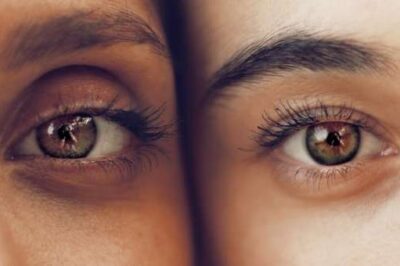Eyes have been called the “windows to the soul” because we use them to express emotion, and they are quite beautiful. These are secondary functions but still very important. Our eyes’ most important function, of course, is giving us vision. So how does this work?
The cornea and lens form a system that, to a good approximation, acts as a single thin lens.This works similar to the lenses on a camera, only much better. These lenses form in the womb when embryonic skin turns into a clear window. The normal blood vessels, hair and sweat glands that grow in your skin are missing from this small area, though it’s filled with sensitive nerves. These lenses change shape depending on the available light and can automatically adjust over a range of 10 billion to one.
Twelve muscles, six for each eye, control the movement of our eyes and lenses. If these muscles or our eyes were even slightly misaligned, we would see double. It’s as if our eyes have been designed with incredible precision.
The cornea catches the light bouncing off objects, and it travels to the pupil, a round hole in our eye. The iris, the colored part of your eye, regulates the amount of light allowed into the pupil by opening and closing. Now, this changes the size of the pupil.
The light then goes to the lens proper, which is flexible and focuses the light on our retina, a thin layer of tissue with millions of light-sensing nerve cells called rods and cones. These cells convert light into electrical impulses which travel up the optic nerve to be understood by the brain.
Whew! That’s quite the process! And … all that happens without you having to bat an eyelash.
Now, some proponents of Darwinian evolution will argue that the human eye is actually an inefficient design despite its superiority to any man-made camera, its self-cleaning and self-repairing equipment and its precision.
The argument goes this way: We have an inverted retina so the light has to pass through several layers before it gets to the photoreceptors. But if our eyes had been designed without these extra layers, our retinas would be more easily damaged by bright light and heat. We might be able to see in the dark better, but daytime sunlight might be almost painful. Because of this, the design we have is actually the best one.
I believe that we were created with purpose, and the God of the Bible thought of everything! And if you want to see better in the dark, don’t look to evolution to help you adapt over the next million years.
Listen to The David Rives Show on the Charisma Podcast Network for more fascinating content about creation like this. {eoa}
The Creator left a pattern of His fingerprints across each corner of the universe, a pattern that David Rives has devoted his life to researching, revealing and sharing, while declaring the glory of God. The president of David Rives Ministries, his weekly TV show Creation with David Rives airs to millions globally on TBN. Author of 21 Verses Backed By Science, his work has been featured on the History Channel, DirecTV, NRB, TBN, CBN, METV, and heard daily on Christian radio. Having gained millions of views on social platforms, his Facebook, TikTok and YouTube pages continue to grow, as Rives captures the attention of Christians and skeptics of all ages. Rives leads annual dinosaur field trips, photo safaris to Africa, expeditions into the Grand Canyon and shares the gospel to millions along the way. He may be reached at [email protected]
Read articles like this one and other Spirit-led content in our new platform, CHARISMA PLUS.







Leave a Comment
You must be logged in to post a comment.